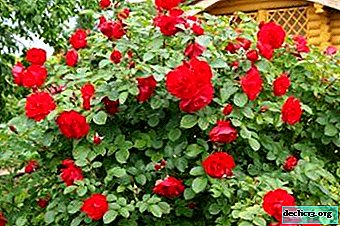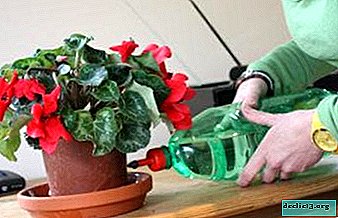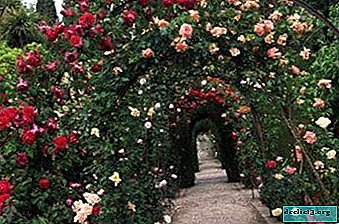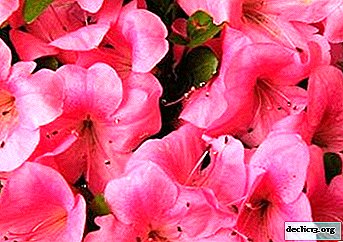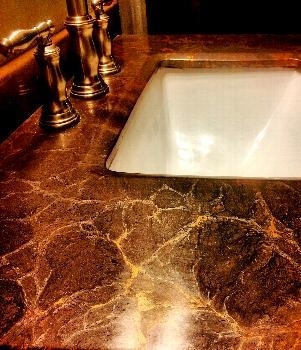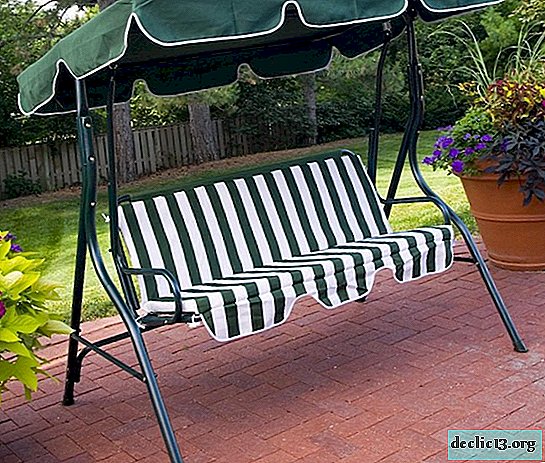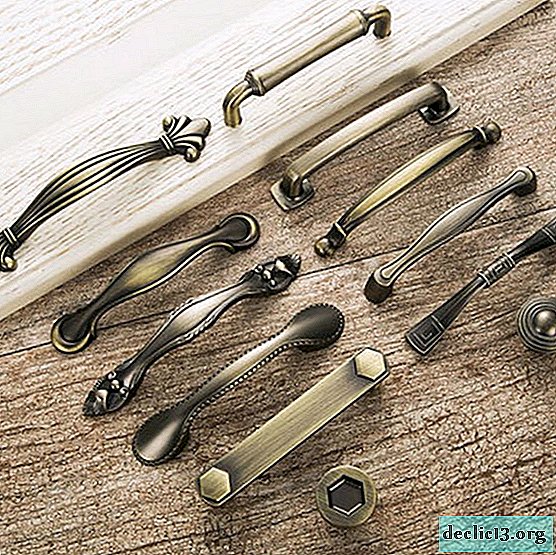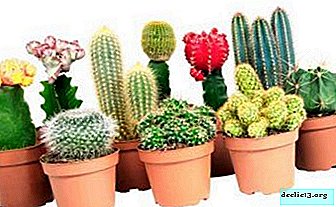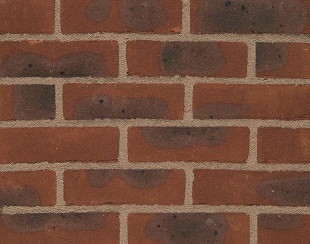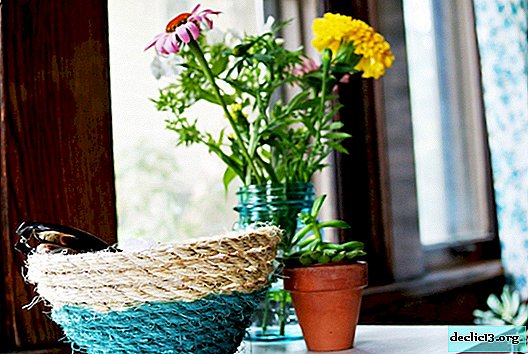If your petunia dries up - what to do to reanimate a plant?
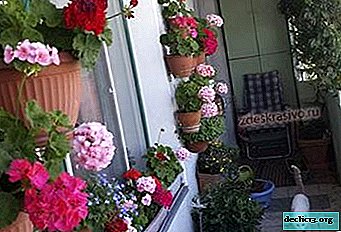
Petunia is a delicate and beautiful flower that adorns balconies, terraces, flower beds. Cultivation is not difficult, flowering continues until the first cold weather. But newcomers and experienced gardeners are often worried about the question of why the leaves of the petunia are drying, this is the result of improper care or a sign of illness, and what to do if such a nuisance occurs.
If such a problem is detected, you need to establish the exact cause and only then take action.
Plant features
Reference! The plant has a slightly branched rhizome, it lies shallow. The stems are round in shape, densely branched, saturated green. Their shape and size depends on the particular variety. The stems can stand straight or spread, be tall (60-70 cm) or short (20-30 cm).Petunias are divided into several types.
- Shrubs most often adorn balconies and flower beds.
- Ampelny petunias are planted in hanging pots, a cache-pot. When planted in flower beds, ampels creep on the ground.
- Semi-ampelous (cascading) flowers build up long erect shoots, which then hang under their own weight. You can plant such varieties in hanging containers, and in balcony or window boxes.
Possible causes of drying
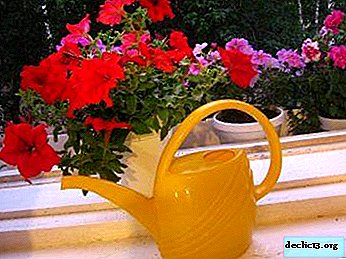 Most often, the yellowing and drying of the petunia is result of improper care:
Most often, the yellowing and drying of the petunia is result of improper care:- This may be irregular watering in the heat or excess moisture in the soil during the cold season (the roots rot, it affects the leaves).
- The next reason is the lack of fresh air. Petunia dries up on glazed balconies on sunny days. It is recommended to open windows in warm weather, and in summer - to hang a flower on the street on brackets.
- Other factors of poor-quality care are sharp jumps in temperature, the use of hard water during irrigation, and a lack of iron in the soil.
- Home beauty may dry due to disease progression. Most often, fungal infections become the culprit of yellow leaves in petunias. This is gray rot, powdery mildew, Fusarium drying. The mechanism of development in diseases is identical: the fungus affects the vessels in the basal zone and does not allow nutrients to reach the stem, leaves. The plant does not receive moisture, nutrition and gradually fades.
- The third possible reason is pest infestation. What parasites can settle on petunias?
- Spider mite. Little spiders of red color surround the plant with a silver web. Increases the risk of infection violation of the moisture regime.
- Aphid. This is a small insect of gray or green color. Parasites live on the back of the leaf, causing it to gradually fade. Another sign of infection is that the ends of the leaf begin to curl.
- Nematodes are small worms that infect rhizomes. By signs, this infection resembles a fungal infection. Nematodes suck juice, petunia withers and dries.
You can find more information about the diseases and pests of petunia in a separate material.
What causes the lower leaves to fade?
Attention! The cause of petunia wilting can be natural if the plant is more than 2 months old. So petunia discards the "spent" lower leaves.This usually happens in late August or early September. Another reason is adverse conditions. Among them are dry soil, stagnation of water in the soil, lack of mineral fertilizing. Lower the leaves may fade due to the fact that the petunia stands in a dark place.
Algorithm of actions depending on the cause
The exact actions of the grower depend on the exact cause. With improper care, it is only necessary to revise the conditions of detention, and if infected with parasites, urgent treatment with chemicals is necessary.
| Cause | What is needed in the process? | Action algorithm |
| Wrong watering |
|
|
| Gray rot |
|
|
| Powdery mildew |
|
|
| Iron chlorosis or iron deficiency in the soil. | A solution of citric acid and iron sulfate (half a teaspoon). Dilute in boiled water. | Water the petunia with the resulting solution after watering with plain water. Repeat 2-3 times a day. |
| Aphid |
|
|
| Spider mite |
| When processing, moisten the petunia completely, especially the lower plate of the sheet. |
| Nematodes | The drug Narcissus (0.5 ml per 1 liter of water). | It is difficult to get rid of a pest. If the remedy does not help, you need to transplant the petunia into the new soil, after calcining it first. |
For more information on the prevention and treatment of chlorosis and powdery mildew, see the video below:
Resuscitation measures
 The plant can be revived only if living parts remain in it. If the petunia is completely dried up, it will not work to reanimate it. The main measure of assistance for recovery is putting it in water. First you need to trim all the dry leaves, flowers.
The plant can be revived only if living parts remain in it. If the petunia is completely dried up, it will not work to reanimate it. The main measure of assistance for recovery is putting it in water. First you need to trim all the dry leaves, flowers.
A pot with dry petunia should be put in a pan, water should cover it to half. Wait 3 hours. You can also completely fill the plant with water (put in a bucket), leave for several days. A sign that the flower comes to life is the appearance of green shoots and new leaves.
What to do for prevention?
Important! Properly organized care and regular prevention will prevent drying and withering of petunias. It is better to transplant adult plants on cool days. Experienced flower growers are advised to take into account the wishes of the lunar calendar.Before planting in new soil, it should be scalded with boiling water, frozen, treated with a solution of potassium permanganate. At the bottom of the pot, it is imperative to pour gravel or expanded clay - this will prevent decay
What else is important to consider the grower?
- When transplanting, you must not violate the integrity of the root, do not loosen the earthen lump.
- In pots you need to change the earth annually.
- 1-2 times in 10 days for prevention, you can water the plant with a weak solution of manganese. If petunia has become frail, treat it with a low dosage of Fundazole (the exact instructions on the package).
- Fertilizers should be applied no more than 1 time in 10-20 days.
- Planting or planting marigold pots next to the petunia is a natural defense against nematodes.
Petunia loves sufficient sunlight, air temperature at least 23 degrees, humidity 70-80%. In summer, pots with a plant can be taken out to the balcony, in winter - put on window sills, where a sufficient amount of light penetrates.
Petunia is a perennial non-whimsical plant that is popular with flower growers. A flower can wither and wither for a number of reasons: from overdried soil to rhizome damage. First, if the petunia began to dry, find out the cause. All further actions depend on the information received.

 Most often, the yellowing and drying of the petunia is result of improper care:
Most often, the yellowing and drying of the petunia is result of improper care:
